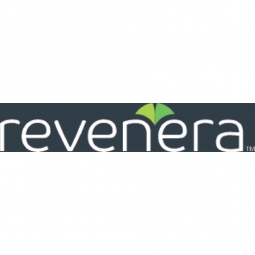Download PDF
F9’s New License Model: A Cloud-Based Transformation
Technology Category
- Functional Applications - Enterprise Resource Planning Systems (ERP)
- Platform as a Service (PaaS) - Application Development Platforms
Applicable Industries
- Retail
Applicable Functions
- Procurement
Use Cases
- Inventory Management
- Usage-Based Insurance
Services
- Cloud Planning, Design & Implementation Services
The Challenge
F9, an independent business unit of Infor, was facing several challenges with its legacy licensing solution. The solution was not evolving with their needs and was failing to deliver the desired customer experience. The company was looking to modernize its licensing capabilities and add support for new SaaS monetization models. The existing system lacked clear visibility into who was purchasing, activating, and reactivating licenses. Tracking users and the devices F9 was running on was also a challenge. The company was also looking to offer new pricing and functionality within their next major release to strengthen their competitive position. Furthermore, F9 wanted to improve the customer experience by providing a reliable and user-friendly customer portal for self-activation and reducing license-related support issues.
The Customer
Infor
About The Customer
F9 is an independent business unit of Infor, a global enterprise leader in business cloud software. F9 provides comprehensive financial reporting and analytics, linking Microsoft Excel® with enterprise organizations. Their robust financial solution streamlines reporting and offers speed, flexibility, and ease of use to more than 35,000 customers and over 150 ERPs. F9's ERP solutions have moved to SaaS, and they were looking for a solution that could support subscription licensing and offer new pricing and functionality to strengthen their competitive position.
The Solution
F9 collaborated with Revenera to implement Revenera’s Software Monetization solutions, including Entitlement Management and Software Licensing. The new monetization system gave customers control over their license activities, allowing them to easily move from trial to paid licenses, and deactivate and reactivate as needed. The solution provided a centralized end-to-end monetization platform, reducing complexity and costs for back office administration. F9 and their ERP Partners now have a more detailed view of these activities than was possible with their legacy solution. The company also introduced Infor-branded customer and partner portals, delivering new self-service and license management capabilities. With the new SaaS licensing option, customers can opt to purchase F9 for a fixed term, which fits well for hosting.
Operational Impact
Quantitative Benefit
Related Case Studies.

Case Study
Improving Production Line Efficiency with Ethernet Micro RTU Controller
Moxa was asked to provide a connectivity solution for one of the world's leading cosmetics companies. This multinational corporation, with retail presence in 130 countries, 23 global braches, and over 66,000 employees, sought to improve the efficiency of their production process by migrating from manual monitoring to an automatic productivity monitoring system. The production line was being monitored by ABB Real-TPI, a factory information system that offers data collection and analysis to improve plant efficiency. Due to software limitations, the customer needed an OPC server and a corresponding I/O solution to collect data from additional sensor devices for the Real-TPI system. The goal is to enable the factory information system to more thoroughly collect data from every corner of the production line. This will improve its ability to measure Overall Equipment Effectiveness (OEE) and translate into increased production efficiencies. System Requirements • Instant status updates while still consuming minimal bandwidth to relieve strain on limited factory networks • Interoperable with ABB Real-TPI • Small form factor appropriate for deployment where space is scarce • Remote software management and configuration to simplify operations

Case Study
How Sirqul’s IoT Platform is Crafting Carrefour’s New In-Store Experiences
Carrefour Taiwan’s goal is to be completely digital by end of 2018. Out-dated manual methods for analysis and assumptions limited Carrefour’s ability to change the customer experience and were void of real-time decision-making capabilities. Rather than relying solely on sales data, assumptions, and disparate systems, Carrefour Taiwan’s CEO led an initiative to find a connected IoT solution that could give the team the ability to make real-time changes and more informed decisions. Prior to implementing, Carrefour struggled to address their conversion rates and did not have the proper insights into the customer decision-making process nor how to make an immediate impact without losing customer confidence.

Case Study
Digital Retail Security Solutions
Sennco wanted to help its retail customers increase sales and profits by developing an innovative alarm system as opposed to conventional connected alarms that are permanently tethered to display products. These traditional security systems were cumbersome and intrusive to the customer shopping experience. Additionally, they provided no useful data or analytics.

Case Study
Ensures Cold Milk in Your Supermarket
As of 2014, AK-Centralen has over 1,500 Danish supermarkets equipped, and utilizes 16 operators, and is open 24 hours a day, 365 days a year. AK-Centralen needed the ability to monitor the cooling alarms from around the country, 24 hours a day, 365 days a year. Each and every time the door to a milk cooler or a freezer does not close properly, an alarm goes off on a computer screen in a control building in southwestern Odense. This type of alarm will go off approximately 140,000 times per year, equating to roughly 400 alarms in a 24-hour period. Should an alarm go off, then there is only a limited amount of time to act before dairy products or frozen pizza must be disposed of, and this type of waste can quickly start to cost a supermarket a great deal of money.

Case Study
Supermarket Energy Savings
The client had previously deployed a one-meter-per-store monitoring program. Given the manner in which energy consumption changes with external temperature, hour of the day, day of week and month of year, a single meter solution lacked the ability to detect the difference between a true problem and a changing store environment. Most importantly, a single meter solution could never identify root cause of energy consumption changes. This approach never reduced the number of truck-rolls or man-hours required to find and resolve issues.






